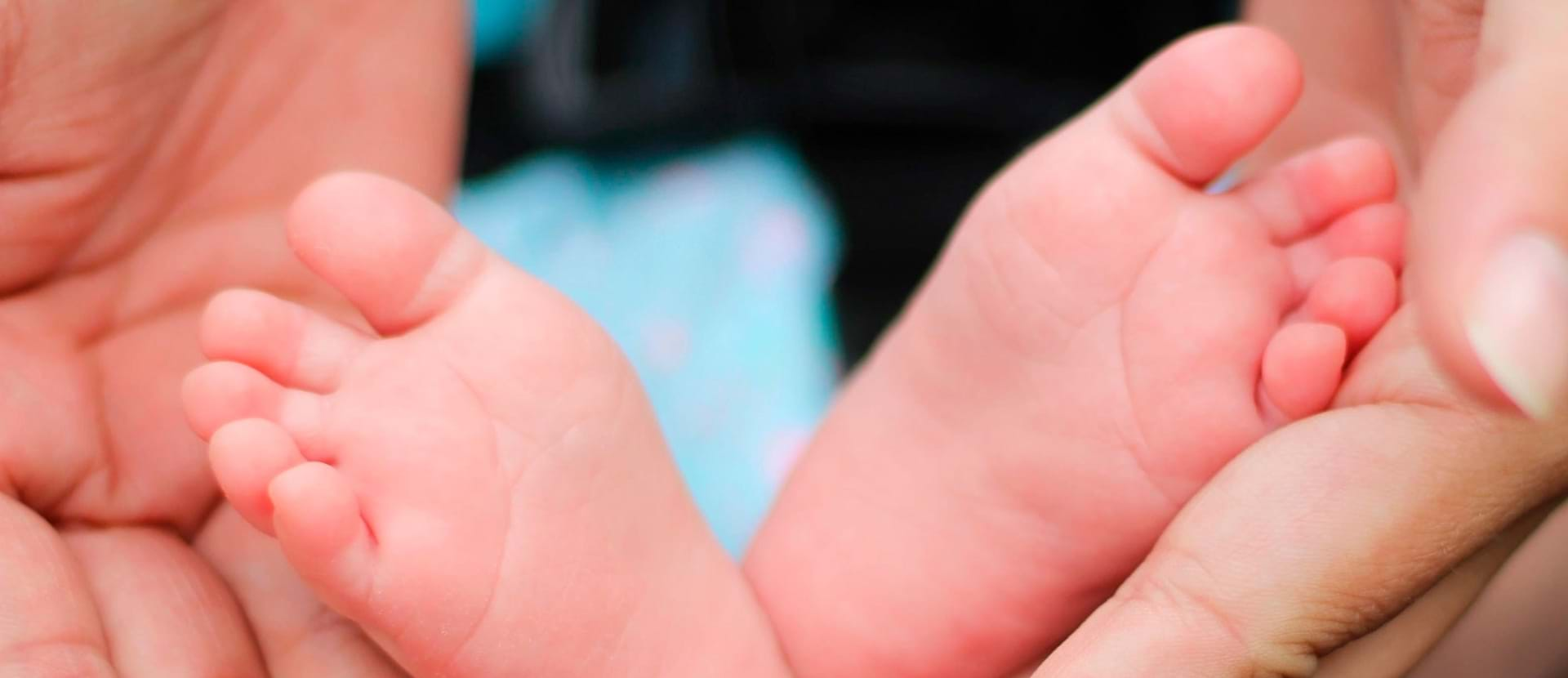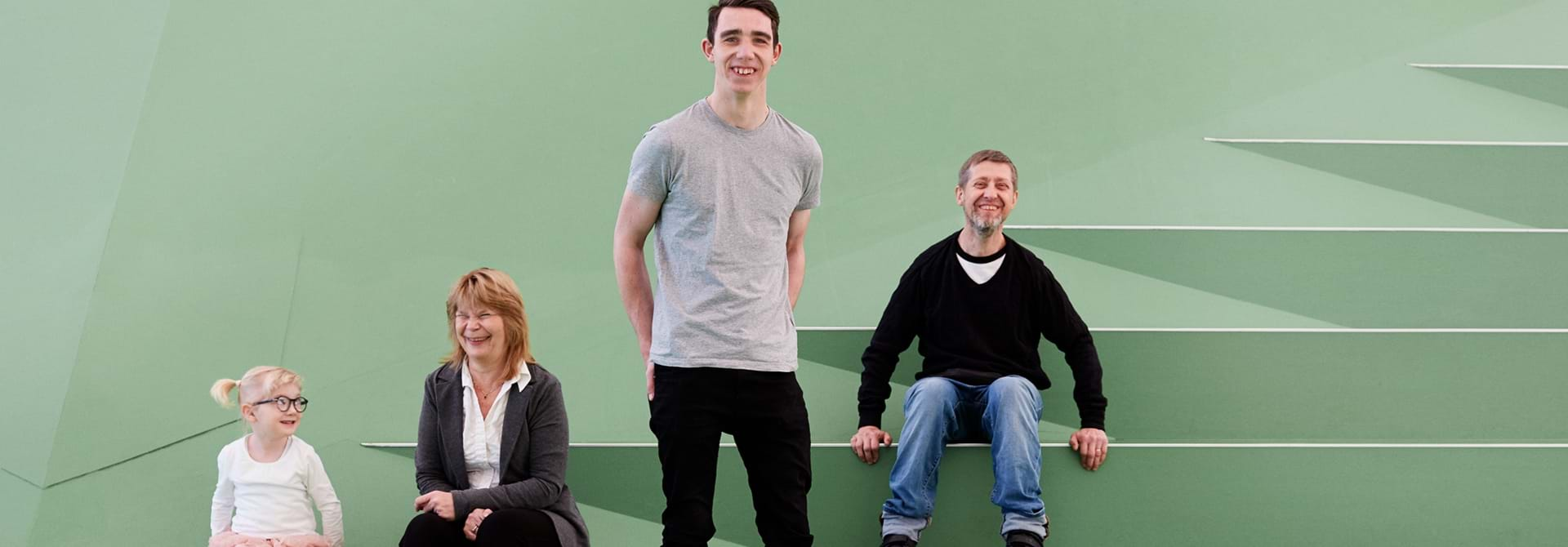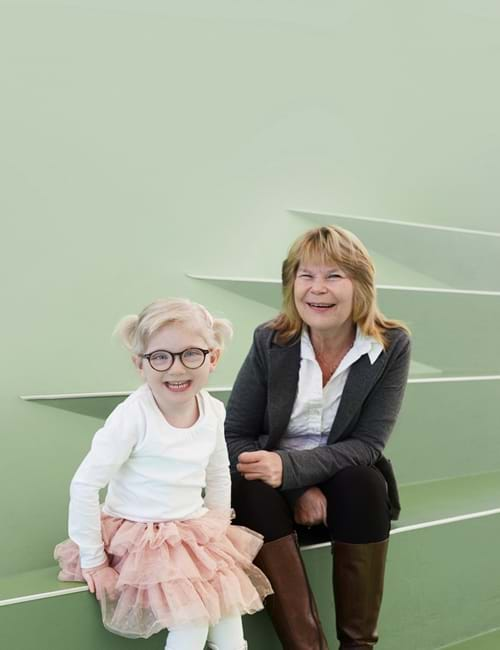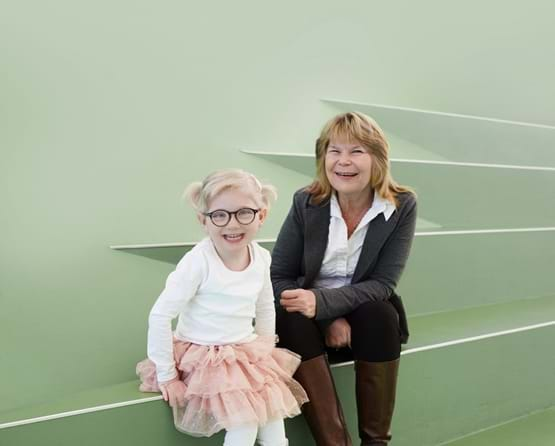What is CP?
Cerebral Palsy (CP) is a diagnosis of disrupted brain development, also known as brain damage. In most cases, it occurs during fetal development or at birth.
CP manifests early in life, affecting the brain's ability to control movements, and often leads to lasting motor and cognitive challenges. There are however considerable individual differences. CP is a lifelong condition. It’s not a typical disease in the sense that it can’t be cured, but its effects can be mitigated. These effects may include reduced muscle strength, reduced mobility, involuntary movements, difficulties with eating, speaking, and physical activity, sensory disturbances, impaired vision and hearing, and cognitive challenges. Epilepsy is also common.
The diagnosis now known as CP was formerly referred to as spastic paralysis.
When and why do people get Cerebral Palsy?
The disruption of brain development typically occurs before, during, or shortly after birth. The diagnosis of CP is usually made around the age of one. In most cases, CP is due to complications affecting the fetus during pregnancy. The exact cause can be difficult to pinpoint, but it often involves a disruption in the delivery of oxygen and nutrients to the fetal brain through the blood.
At birth, there can be complications that temporarily deprive the baby's brain of oxygen, or cause bleeding and blood clots. After birth, the issues may stem from trauma, such as head injury, traffic accidents, brain infections, or blood clots in the brain. Regardless of the cause or timing, the child faces a life that requires ongoing support and intervention.
CP doesn’t worsen over time. However, inactivity can cause complications like changes in muscles, tendons, and joints, which can reduce mobility and lead to joint problems.
With regards to deliveries, CP is often caused by complications that result in the child’s brain being deprived of oxygen or the occurrence of bleeding or blood clots.
After the child has been born, CP is often caused by trauma, e.g. blows to the head, traffic accidents, brain infections or blood clots in the brain.
Regardless of the cause or time of the disruption, many of these children will require support and concrete interventions for the rest of their lives.
This disruption to brain development that is the cause of CP does not worsen with time, but adaptations and complications will potentially arise which will determine which challenges and possibilities the individual faces. Most commonly, there can arise secondary changes in muscles, tendons and joints that can lead to impaired mobility and joint deformities.
What does Cerebral Palsy mean?
Cerebral Palsy is a medical term. 'Cerebral' means 'brain' and 'palsy' means 'paralysis'. Cerebral Palsy was previously called 'spastic paralysis', and people with CP were referred to as 'spastics'. This is no longer the case, as these terms are neither representative nor accurate.
What challenges do people with CP face?
The motor, cognitive, and social challenges people with CP face vary from person to person, and they aren’t necessarily associated. Some people with CP have cognitive challenges, but have only mild motor impairments. Others may face severe motor challenges, but only mild cognitive difficulties.
Similarly, the degree of functional impairment can affect a person's daily routines and life in different ways.
With assistive devices and the right knowledge (e.g., about exercise, nutrition, and the importance of social interaction), most people with CP lead a good life where the disability doesn’t overshadow their quality of life and opportunities.
Motor challenges
CP can lead to reduced motor function. This may manifest as changes in posture, walking difficulties, and problems with writing, drawing, eating, and other activities. Motor challenges can include both gross and fine motor skills. For example, some people may have mild walking difficulties, while others use a wheelchair.
Professionals typically classify gross motor function using the GMFCS system, which ranges from 1 to 5. Grade 1 indicates mild motor difficulties, while grade 5 indicates severe motor difficulties.
Cognitive challenges
People with CP can also have cognitive challenges that differ in severity. This is often referred to as the "invisible" disability. These challenges can vary widely, but typically manifest as difficulties with concentration, memory, organization, and overview.
The term cognition covers both a general level of understanding and specific cognitive abilities such as attention control, visual information processing, spatial awareness, working memory, impulse control, and more. Not everyone with CP experiences cognitive difficulties.
Learn more about cognitive difficulties and how to manage them.
Social challenges
Social communities are just as valuable for children and adults with CP as they are for everyone else. Social gatherings can be draining, and navigating others’ reactions can heighten one's feelings of insecurity. Most people experience this, but it can be more pronounced for those with CP and other conditions.
Social interactions are, however, important for a good quality of life. Healthy social interactions help develop lifelong relationships and can strengthen confidence and belief in personal potential and abilities.
People living with CP may have challenges that aren’t necessarily visible to others. When these challenges are 'invisible,' a good strategy can be to turn them into advantages, for example, by being open and honest about the situation, building confidence, taking on challenges, and focusing on strengths.

Early diagnosis provides the best conditions for interventions, but it’s never too late to improve your functional level. PHOTO: Archive
Symptoms of CP - early detection is important
CP is usually diagnosed by a doctor in a paediatric department based on a paediatric neurological assessment. About half of the children are diagnosed within their first year. Those with milder symptoms are usually diagnosed in the following years.
Key symptoms that can lead to diagnosis include:
- Delays in motor skill development
- Difficulties with sucking and swallowing
- Unexplained muscle stiffness
- Asymmetrical movements and postures
- Reduced muscle strength
Internationally, there is a major focus on early CP diagnosis - ideally immediately after birth - to provide effective support for the child and their family.
Researchers at the Elsass Foundation, in cooperation with several of the country's neonatal units, are also striving to develop and test methods to identify children and families in need of support before the child reaches three months of age.
CP Statistics
- 8,000-10,000 Danes live with CP.
- CP is the most common diagnosis among children with disabilities.
- Approximately 120 children are diagnosed with CP each year in Denmark, which corresponds to 1-2 out of every 1,000 children.
- An estimated 17 million people worldwide live with CP.
- About 60% of children with CP (ages 8-15) are categorized as having mild CP, while only 31% of adults with CP fall into this category. This decrease may be due to the typical decline in functional capabilities that comes with aging.
What can you do as a family member or relative?
There is no definitive guide on the best way to help a child with CP. The most important thing is to focus on the child and let them show you what they can do. They can often do a lot more than you might expect.
It’s important not to compare different children with CP and their daily activities, because they’re just as unique as any other children. Research shows that our brains are constantly changing, especially when we engage in physical activity. These changes help the child better control their movements. This capacity for change means that the child has the possibility to improve both motor and cognitive skills. The child should have the chance to explore and be challenged through various activities. Whatever the severity of CP, it's important for the child to have a wide range of experiences and opportunities. Children with CP learn through sensory experiences and repetition, just like other children.
Read more about physical activity here.
As a relative or family member of a child with CP, you need to constantly adapt to the child's needs, which change with age. Different professionals will be involved over the years, with their roles and level of collaboration depending on the nature and extent of functional issues.
It is the parents' role to make decisions and coordinate care for their child in collaboration with professionals. This should change as the child grows into a young adult. Young people and adults with CP have the right to be involved and make decisions about their own lives, just like anyone else.
For parents of children with CP, it’s completely natural to find yourself preoccupied with thoughts about the future. If you’re unsure about how to best support your child's development, don’t hesitate to seek advice and guidance from the professionals involved with your child or contact the Elsass Foundation.


